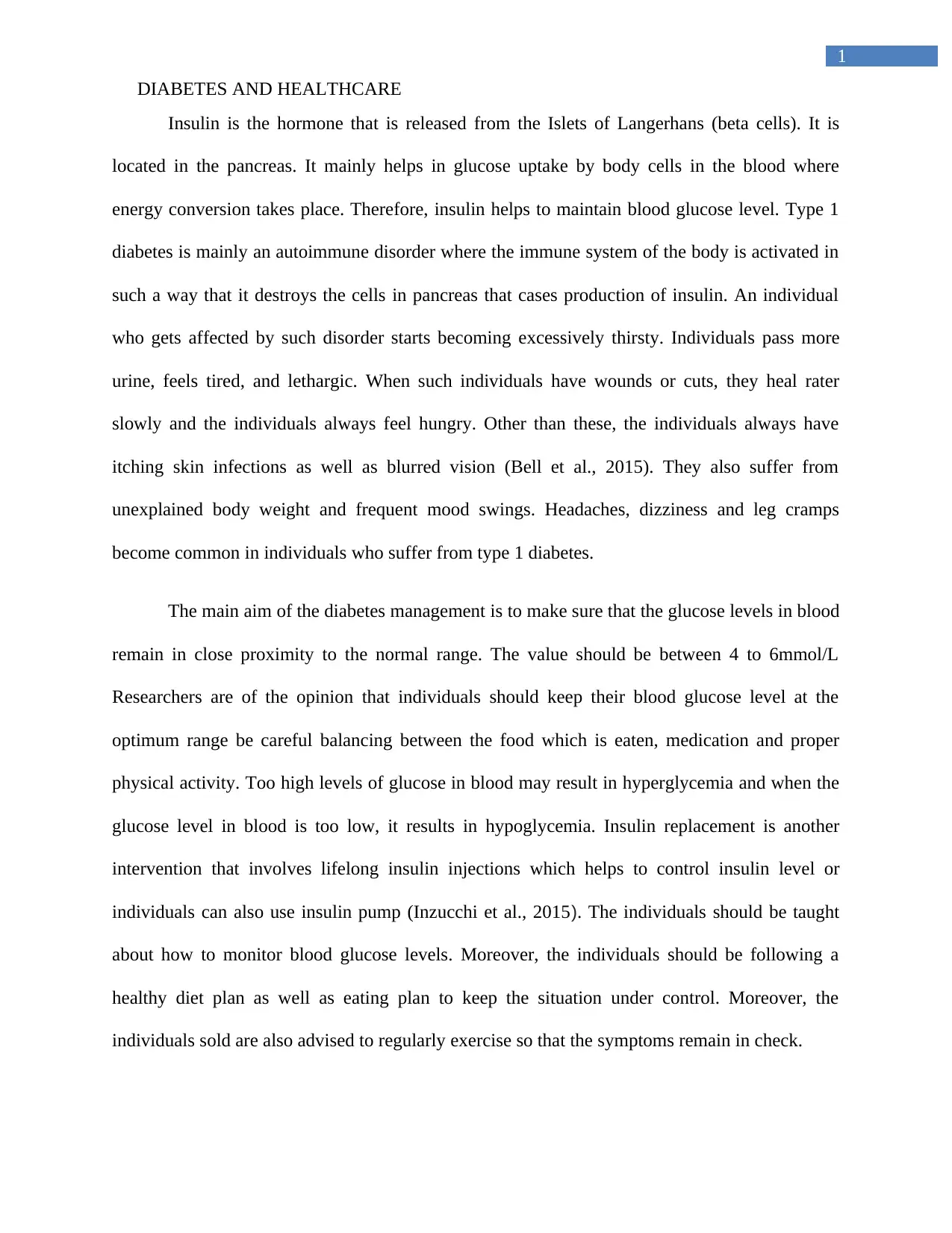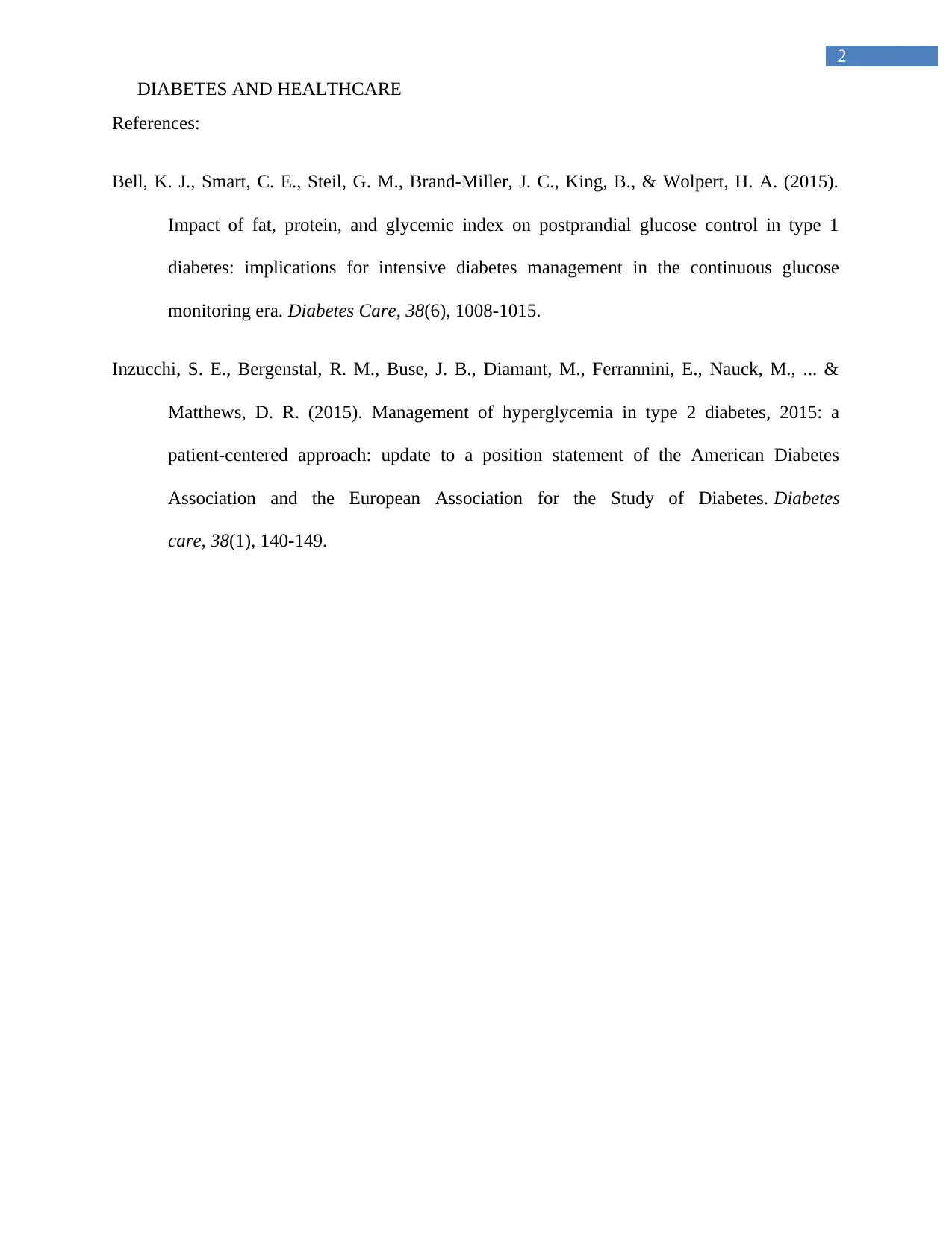Diabetes and Healthcare: Insulin, Management, and Symptoms
VerifiedAdded on 2021/04/21
|3
|546
|36
Report
AI Summary
This report delves into the realm of Diabetes and Healthcare, focusing on Type 1 diabetes. It highlights the crucial role of insulin, a hormone produced by the pancreas, in regulating blood glucose levels. The report explains the autoimmune nature of Type 1 diabetes, where the body's immune system attacks the insulin-producing cells. It describes common symptoms such as excessive thirst, frequent urination, fatigue, and blurred vision. The report emphasizes the importance of managing blood glucose levels through a combination of diet, medication, and physical activity. It also discusses insulin replacement therapy and the need for individuals to monitor their blood glucose levels. The report concludes by emphasizing the importance of a healthy diet, regular exercise, and a comprehensive understanding of the disease to effectively manage Type 1 diabetes.
1 out of 3










![[object Object]](/_next/static/media/star-bottom.7253800d.svg)